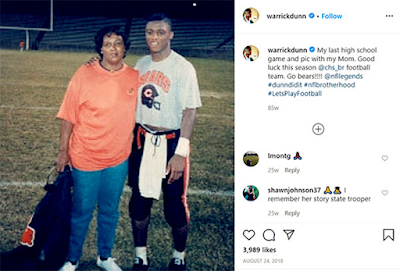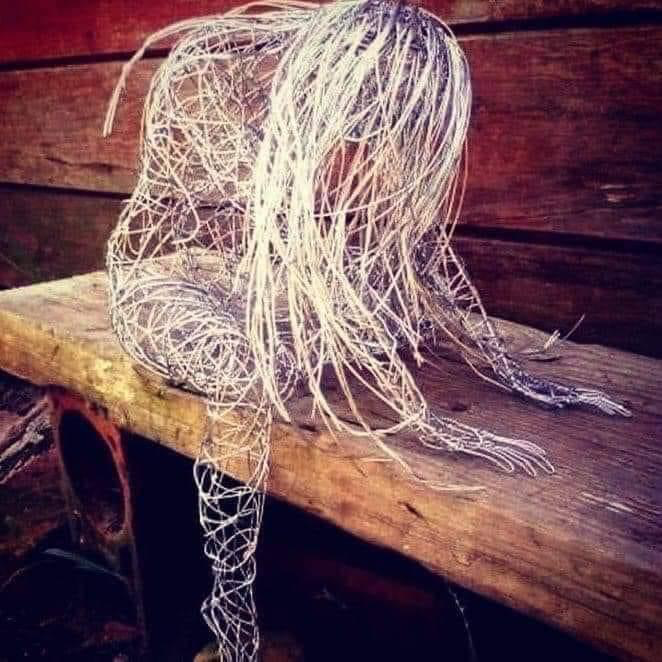Chapter 6 Unsung Warriors -- Black Women
The most
disrespected person in America is the Black woman.
The most
unprotected person in America is the Black woman.
The most neglected
person in America is the Black woman.
Malcolm X’s Speech about Black Women
Black
women’s identities have been prescribed and conscribed almost from the
beginning of our Nation. These representations
of the African woman in America have rarely reflected the contributions to the American
project. Even when there is an attempt to
grudgingly acknowledge their true histories, it barely scratches the
surface. Black women have blazed the
trail, set the bar, and creatively constructed their identities and realities from
the Revolutionary War to the Civil War, from the Industrial Revolution to the
era of civil rights, and from “Hidden Figures” to “the Black Lives Matter Movement.” This chapter, acknowledges the various ways
Black women have been both sterilized and characterized, they remain unsung warriors. Explored, therefore, will be the classic stereotypes that have attempted to racialize and minimize her. But this
chapter will also explore not only their responses, but their active engagement
in the process of creating, sustaining, and maintaining feminine identities
that are uniquely African, Black, and proud.
We begin with Nina Simone's 1966 classic as she captures the four
principal character types:
1. She
heralds "Aunt Sarah" as a strong, resilient woman who declares, "My skin is black/My arms
are long/My hair is wooly/My back is strong/Strong enough to take the
pain/Inflicted again and again/What do they call me? /My name is Aunt
Sara".
2. Then
there is "Saffronia," a mixed-race woman described as "my
skin is yellow" who was forced to live "between two worlds."
In this in-between place, she is buffeted by the Black and Whites. "My
father was rich and white; he forced my mother late one night."
3. Then
there is "Sweet Thing," accepted by both Blacks and Whites, whose
primary attributes were neither good looks nor fine hair but because she could
satisfy the sexual needs of men – "Whose little girl am I? /Anyone who
has money to buy."
4. Nina's
lament ends with the bitter tale of a woman who has endured generations of
oppression and suffering. She cries out, "My skin is brown/My manner is
tough/I'll kill the first mother I see/My life has been rough/I'm awfully
bitter these days/Because my parents were slaves."
And in a scream that rages through the ages, she declares, "My name is
Peaches!". (Davis
2003)
These
four characterizations were also reflected in the work of Patricia Hill Collins
as one of several controlling images established by the racial order to not
only define but limit Black feminine realities.
Four such images were the Mammy, Jezebel, Sapphire, and the Welfare Mother, all created to control how Black women were perceived within Western
institutions. Black women, a part of virtually every aspect of American history, were forbidden from reading and writing and often restricted to the kitchen, the field, and virtually invisible.
Even today, Black women are often not considered normal, typical, or worth our attention. Because of the misperceptions, misrepresentations, stereotypes, and outright racialized sexism, they are least likely to be viewed as worth our attention. They are, therefore, "often overlooked when we discuss racism and sexism; even then, they are most likely to be discriminated against.” (Coles and Pasek 2020)
In many ways, Black women are the epitome of what can only be termed "Unsung Warriors." Among these legendary warriors is, of course, the Matriarch or the Mammy.
Matriarch a.k.a. the Mammy
Select enslaved Black men were often forced to have sex
with multiple Black women, much like the breeding of animals, to produce prized
slaves. Sex was, therefore, a reward to those Black men and women deemed worthy
of such rewards.
But like other animal stock, fathers were not needed and
were often sold as quickly as the pregnancies were confirmed. Black men,
therefore, became disposable in this system. [Davis citing (Clarke 1971)]
Although discarded, that did not mean that Black fathers
and mothers did not do their utmost to preserve contact. Records demonstrate
that one of the most pressing needs of Black mothers and fathers during
Reconstruction was to reconstruct their families. (See, for example, Williams
2012) Records also indicate that absent this, the extended family of
grandparents, mothers, and fathers, and an entire system of what has been called
"fictive kinship" came into being to preserve and maintain fully functioning
families in the Black community.
The system survived Reconstruction but was almost
immediately under attack in the next wave of anti-Black racism. Even today, the
myth of a matriarchal Black family and the domineering Black woman
survives.
Warrick Dunn constantly praises his late mother, Betty
Smothers, a single parent who worked as a police officer in Baton Rouge,
Louisiana, to raise six children. Unfortunately, her life was cut short on
January 7, 1993, when two robbers ambushed her while she was working off-duty
to escort a businesswoman to make a night deposit.
At 18, Dunn was left to raise his five younger
siblings. In 1997, Dunn signed a multimillion-dollar contract to play
professional football with the Tampa Bay Buccaneers, but he never forgot the
mother who got him there. (Lewe 2021)
Mothers like Betty Smothers are not some rarities but part
of the success stories of millions of kids. Kids without these unsung warriors
would not have had a chance. It is no accident that Black mothers have been
forced to bear the brunt of parenting from the beginning of the African
presence in America.
The system of slavery required slaves and did not require
strong Black families. The system, therefore, was created to break the
Africans' spirit, foundation, and community. And while the Africans were
enslaved, the family distorted, and the community displaced, they never became
a slave; the family survived, and the community endured. Through all these
assaults, one figure -- the Black matriarch -- stands tall. She provided the
spiritual glue, the grit, and the love that uplifted the child and the man, encouraged
the community, and sustained the family.
Strong Black women have long fought to transform this
country:
·
Women like Harriet Tubman helped over 100,000 people escape
from slavery.
·
Strong Black women like Ida B. Wells-Barnet and Mary Church
Terrell not only fought to end lynching but also were among the first to fight
for women's right to vote.
But unfortunately, their struggle often gets buried under
the attention given to White suffragettes.
Jacqueline Jones (1982)
recounts the story told to Zora
Neale Hurston by her grandmother.
"Ah was born back due in slavery," Nanny tells
her granddaughter, "So it wasn't for me to fulfill my dreams of whut a
woman oughta be and to do." Nanna consistently articulated her desires to
be a good mother, love her family and endure. She never embraced nor denied the
harsh realities of slavery and being denigrated. "Ah didn't want to be
used for a work-ox and a brood-sow, and Ah didn't want mah daughter used dat
way neigher. It sho wasn't mah will for things to happen like they did."
She persisted and held on to her faith silently while
wearing the bondage of slavery. "Ah wanted to preach a great sermon about
colored women sittin' on high, but they weren't no pulpit for me."
(Hurston, 1938:31-32 quoted by Jones 1982). So, while outwardly the enslaved
Black woman was a fieldworker with her head held down, inwardly, she was a
rebellious servant, physically powerful and a devoted mother and wife. (Jones
ibid)
The myth of Black women being docile, controlled, and always
smiling is one of the most prevailing myths within the racial state. Such ideas
are comforting and do not challenge the presumed liberalness of some Whites.
The Mammy is often depicted as a heavyset Black female maid
who is overly loyal to her White masters. The myth led to Black people being
punished when they were not "kind and nice." Therefore, to preserve
White comfort, Black people must conform. Hence was born, and still maintained,
the Mammy. (Thompson 2020) One of the first mammy figures to appear was Aunt
Cloe in Harriet Beecher Stowe's Uncle Tome's Cabin (1852). Black women during
slavery were often charged with various domestic duties, including nursing,
rearing the owners' children, cleaning the house, and preparing meals.
The commercialization of the Mammy figure was accomplished
as Aunt Jemima; the "slave in a box" became a national success. (Manning 1998)
Aunt Jemima, first appearing in 1889, was finally retired
by Quaker Oats in 2020. Aunt Jemima is based on a 19th-century
minstrel show celebrating the racialized characterization of "the
Mammy." The first Aunt Jemima was former slave Nancy Green in 1890. (Olson and Ott, 2020) But
Aunt Jemima, as with most of the mammies, was more the "figment of White
imagination than a factual part of the average master's home." (Hipskind 2009)
Southern Whites so loved the Mammy, in 1923 the U.S. Senate
voted to build a monument "in memory of the faithful slave mammies of the
South." The Southern Congressman who argued for this monument stated,
"The traveler, as he passes by, will recall that epoch of southern
civilization" when "fidelity and loyalty" prevailed. "No
class of any race of people held bondage could be found anywhere who lived
freer from care or distress." (Horwitz 2013)
White supremacy, and Southern nostalgia, with its
"benevolent planters and happy enslaved people,” were certainly in vogue.
The slaves most likely taking care of young White children were very young. (Clinton 1995) And
Blacks in mass rejected the character while lynchings were still in vogue.
As our nation entered the 20th century, Mammy
again was embraced in songs like "Mammy's Little Coal Black Rose (1916).
Built in 1916, the Dead Heroes of the Confederacy monument in Arlington
Cemetery features a frieze which includes "a turbaned and heavyset mammy,
holding up a white child for a departing rebel to embrace. (Horwitz 2013)
Al Jolson relives his earlier minstrel performances in the
1930 Technicolor release of the film Mammy. This led to the first Black
woman, Hattie McDaniel, receiving an Oscar as Mammy in Gone with the
Wind (1939). Mammy is most recently portrayed in The Help
(2011). (Thompson 2020)
The next wave of anti-Black racism, under the guise of
uplift and welfare, again targeted the Black family and the relationship
between Black parents and their children. Under the welfare system, the
presence of a Black man in the family meant either reduced or no subsidy
payment. Therefore, in a strange game of hide and seek, Black men were
noticeably absent when the social worker came to check on the family.
These Black men, who were also being denied jobs and
careers in a white-male-dominated labor force, became easy targets for the
increasingly hostile and militarized industrialized penal system that came into
being. The cradle-to-prison pipeline, fueled by a fierce “war on drugs and
crime,” targeting Black men meant that the prisons across America were soon
filled with Black men, while in the community, Black women were forced to take
on both the roles of mother and father.
Today, "Black women are three times more likely to die
from a pregnancy-related cause than White women. The leading factors associated
with this disparity include access to quality healthcare, structural racism,
and sexism. (C.D.C. 2022) Yet, these realities do not hinder
the continuation of the Mammy stereotype. But Mammy was not alone; Jezebel was
also a frequent target.





Comments
Post a Comment